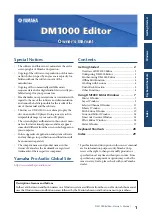
Glossary of terms
396
Ports
1-1023
are reserved and used by well known services (e.g.
80
= WWW). Ports above
1023
can be freely used by any application.
PPTP
Microsoft’s
proprietary protocol used for design of virtual private networks.
See chapters and sections concerning
Private IP addresses
Local networks which do not belong to the Internet (private networks) use reserved ranges
of IP addresses (private addresses). These addresses cannot be used in the Internet. This
implies that IP ranges for local networks cannot collide with IP addresses used in the
Internet.
The following IP ranges are reserved for private networks:
•
10.0.0.0/255.0.0.0
•
172.16.0.0/255.240.0.0
•
192.168.0.0/255.255.0.0
Protocol inspector
WinRoute’s
plug-in (partial program), which is able to monitor communication using appli-
cation protocols (e.g. HTTP, FTP, MMS, etc.). Protocol inspection is used to check proper
syntax of corresponding protocols (mistakes might indicate an intrusion attempt), to en-
sure its proper functionality while passing through the firewall (e.g. FTP in the active
mode, when data connection to a client is established by a server) and to filter traffic by
the corresponding protocol (e.g. limited access to Web pages classified by URLs, anti-virus
check of downloaded objects, etc.).
Unless traffic rules are set to follow a different policy, each protocol inspector is auto-
matically applied to all connections of the relevant protocol that are processed through
WinRoute
.
Proxy server
Older, but still wide-spread method of Internet connection sharing. Proxy servers connect
clients and destination servers.
A proxy server works as an application and it is adapted for several particular application
protocols (i.e. HTTP, FTP, Gopher, etc.). It requires also support in the corresponding
client application (e.g. web browser). Compared to NAT, the range of featured offered is
not so wide.
Router
A computer or device with one or more network interfaces between which it handles
packets by following specific rules (so called routes). The router’s goal is to forward
packets only to the destination network, i.e. to the network which will use another router
which would handle it on. This saves other networks from being overloaded by packets
targetting another network.
Summary of Contents for Firewall6
Page 1: ...Kerio WinRoute Firewall 6 Administrator s Guide Kerio Technologies...
Page 129: ...8 5 HTTP cache 129...
Page 404: ...404...









































